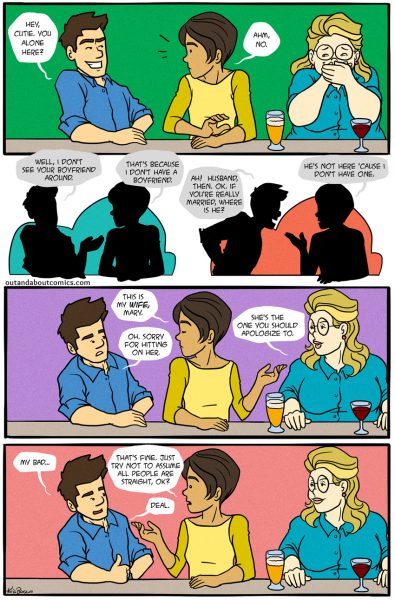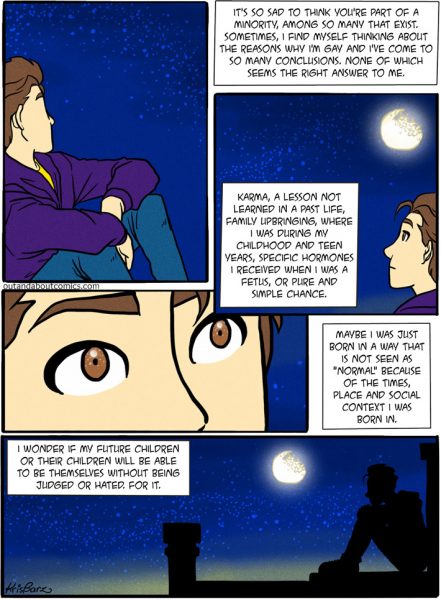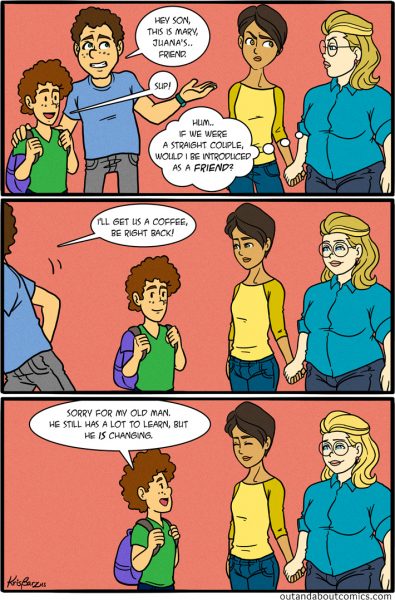“The moment you realize WHEN, WHERE, and WHY you have a certain privilege, you don't have only a privilege anymore. You start having a responsibility.”
― Krisagon Barz Mendonça, Designer and Illustrator, CSU Creative Services
The convergence of privilege and responsibility in society is hardly new as philosophers, authors, and pop culture have propagated the theory in various forms for centuries, but Colorado State University employee Kris Barz Mendonça is taking principled action as he pursues the creation of 1st MIX.
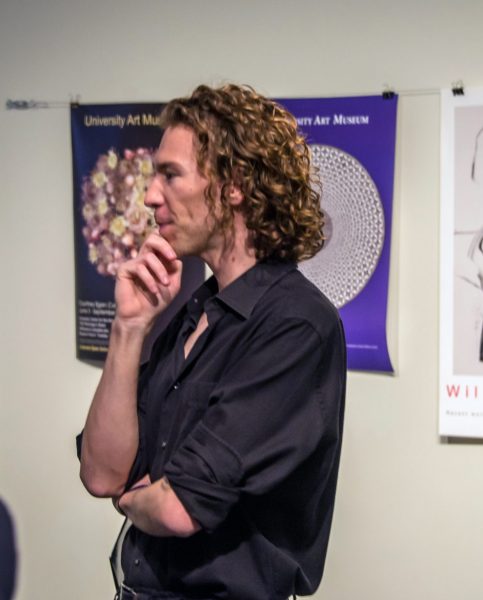
In conjunction with CSU’s centers within Student Diversity Programs and Services (SDPS), the Gregory Allicar Museum of Art presented MIX: Multicultural, Intersectional, Inclusivity, Exchange on March 29, an opportunity to discuss representation and practical change related to social justice.
With the backdrop of the art museum’s temporary and permanent collections viewed through the lens of students’ own experiences and identities, students who may be questioning representation, accessibility, power, and visibility will have conversations with a diverse, five-member panel about feminism, sexual minorities rights, gender, racism, accessibility, xenophobia, and other issues.
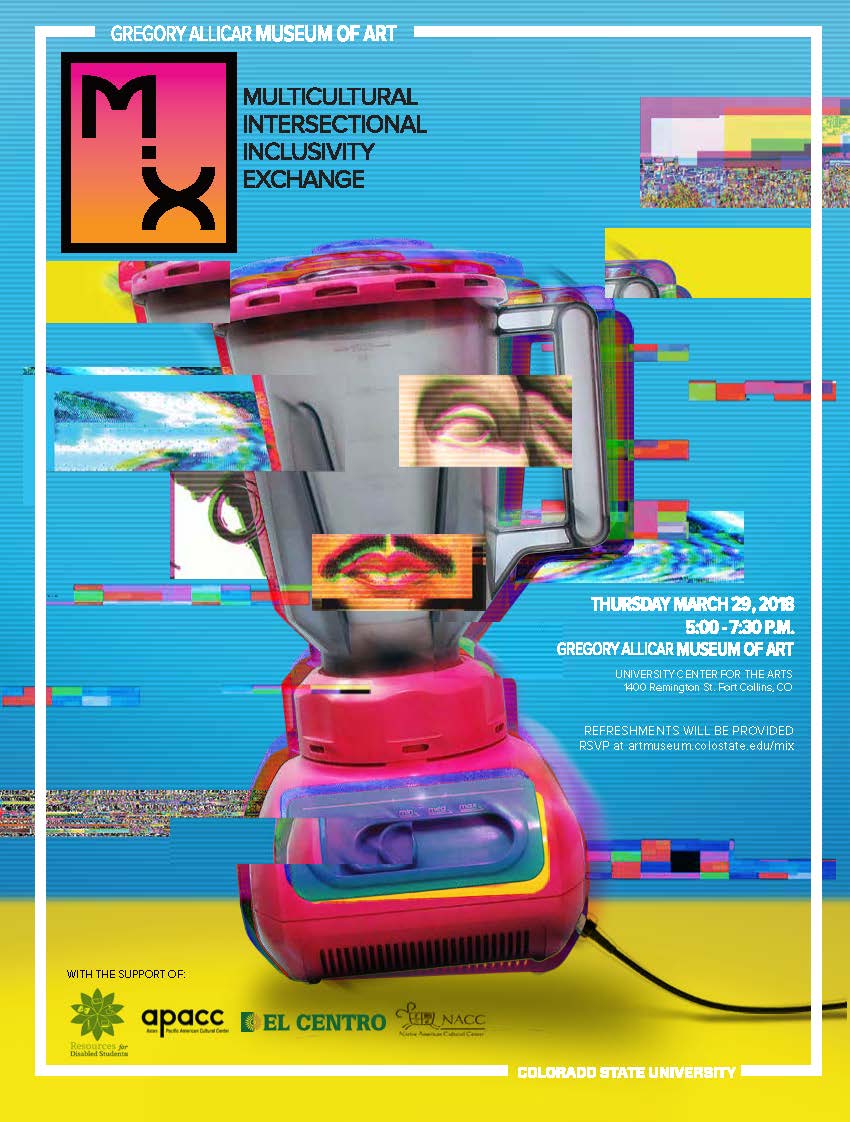
A Critical Shift
The idea for MIX came about in 2017 as Mendonça was assisting with the Pride Resource Center’s programs, as well as working in the Gregory Allicar Museum of Art as the visitor services manager. During his time in the Pride Resource Center, Mendonça became interested in the efforts of the six other diversity programs. “Each center fosters and takes care of certain student minorities, but some students have intersectional identities too, so I wanted to create something that could increase the reach of the programming to some of those resource centers while focusing mainly on intersectionality of identities.”
“Being queer is different if you’re white, if you’re African-American, if you’re Latino, Latina, if you’re a woman, if you’re a man, if you’re cisgender, transgender, gender fluid so the experience of being queer, for example, involves more than sexuality and gender, it involves race, culture, ethnicity, etc.,” said Mendonça. “The [MIX] event expanded after thinking about that.”
MIX panelist Eric Aoki, professor of interpersonal, co-cultural, and intercultural communication in the Department of Communication Studies at CSU, describes the intersectionality of identities as a critical shift away from the practice of essentializing identities where notions of identity are assigned or packaged. “Essentialism creates [a] problem when we begin to say that someone’s identity is only ‘this,’ right? Intersectionality helps move us away from the problem of making that essentialist move and opens a path for looking at a lot of new, different ways, and lenses, and identity variables as we think about cultural identity.” Aoki said.
Although Aoki believes that studying a cultural or social issue through only one variable like race or gender can be a productive learning endeavor – especially when the variable presents a large supply of compelling evidence – expanding that learning by adding questions about age and generation, ethnicity, social class, and religious or non-religious identities, for example, can elevate understanding to another level. Acknowledging many variables of identity, whether in research, programming, or conversation, substantiates the way that we live our lives.
Photo: Eric Aoki
An Intersectional Background
With an intersectional background himself, the Brazilian-born Mendonça identifies as Latino, but also as mixed ethnicity. Mendonça’s mom is of German descent, and his dad is Native American, Spanish, and Nigerian, however, “Growing up I wasn’t encouraged to be aware of all of those identities and ethnicities in that mix, which represents Brazil really well,” he explained. “The way I was raised was, you know, you have white skin. You have to identify as a German, blondish kid.”
Later, Mendonça realized that his family had positioned him to select the race with more obvious privileges. Around the same time, he became in touch with social justice movements related to LGBTQ issues, and in his work as an artist, these topics are his focus. After being out as a gay person for several years, Mendonça started developing his comic strip “Out and About” because he didn’t see the same hues of diversity in movies, TV shows, and comics that he saw in his own community.
After its independent release in 2014, the comic strip quickly gained a following. “I think the project was good, but I also think that it really went viral because people felt that lack of representation,” said Mendonça. “I get a lot of messages from readers saying that through something so simple and small, how they felt represented, or how a certain comic strip initiated a conversation among their family and friends even.”
Because of the intersectionality represented by his characters, the comics often focus on sexism and racism as those issues are intertwined with LGBTQ issues. “The actions and experiences that my characters go through empowers the reader helps them face adversity as LGBTQ people,” said Mendonça. The popular comic has been published as a book and translated into English. outandabout.com
The Role of Art in the Dialogue
In his intercultural communication teaching and research, Aoki looks at how people traverse new cultural contexts, spaces, and places in relationship to who they are and what they bring about who they are into each specific environment.
“If you, me, other people, are bringing intersectional identities into the place, the space, how that text or that art hails us out can be very different in terms of how we interpret it and how we respond to it because it calls us out in different ways,” explains Aoki.
The panelists for MIX were selected based on recommendations Mendonça received from SDPS as well as selections of his own, and is comprised of CSU faculty and staff, many with impressive research credentials in diversity and social justice. According to Mendonça, the panelists’ strong positions and experiences are essential. “For a thousand people, there is one person like psychology professor Silvia Canetto who really pushes perspectives further,” says Mendonça with respect for her work with minorities and representation. “It is important for them to be in this panel because they have so much to bring. It will be very rich.”
In addition to their professional positions, three of the panels are artists themselves. “As artists, we [incorporate] what we feel and think, but it’s also about how people perceive it. Art triggers thoughts as an observer and it fuels conversation,” Mendonça says.
Aoki believes the MIX panel will provide discussion around the importance and challenge of being soulfully and visually represented. “Everyone should have those moments of finding themselves in positive and rich representations, and if in the public sphere, if what we’re producing only does it for a certain facet of the demographic of the population, while that can be awesome for representation of some, it can also be very limiting for who feels included in public life, social life, and who feels included in the art world too.”
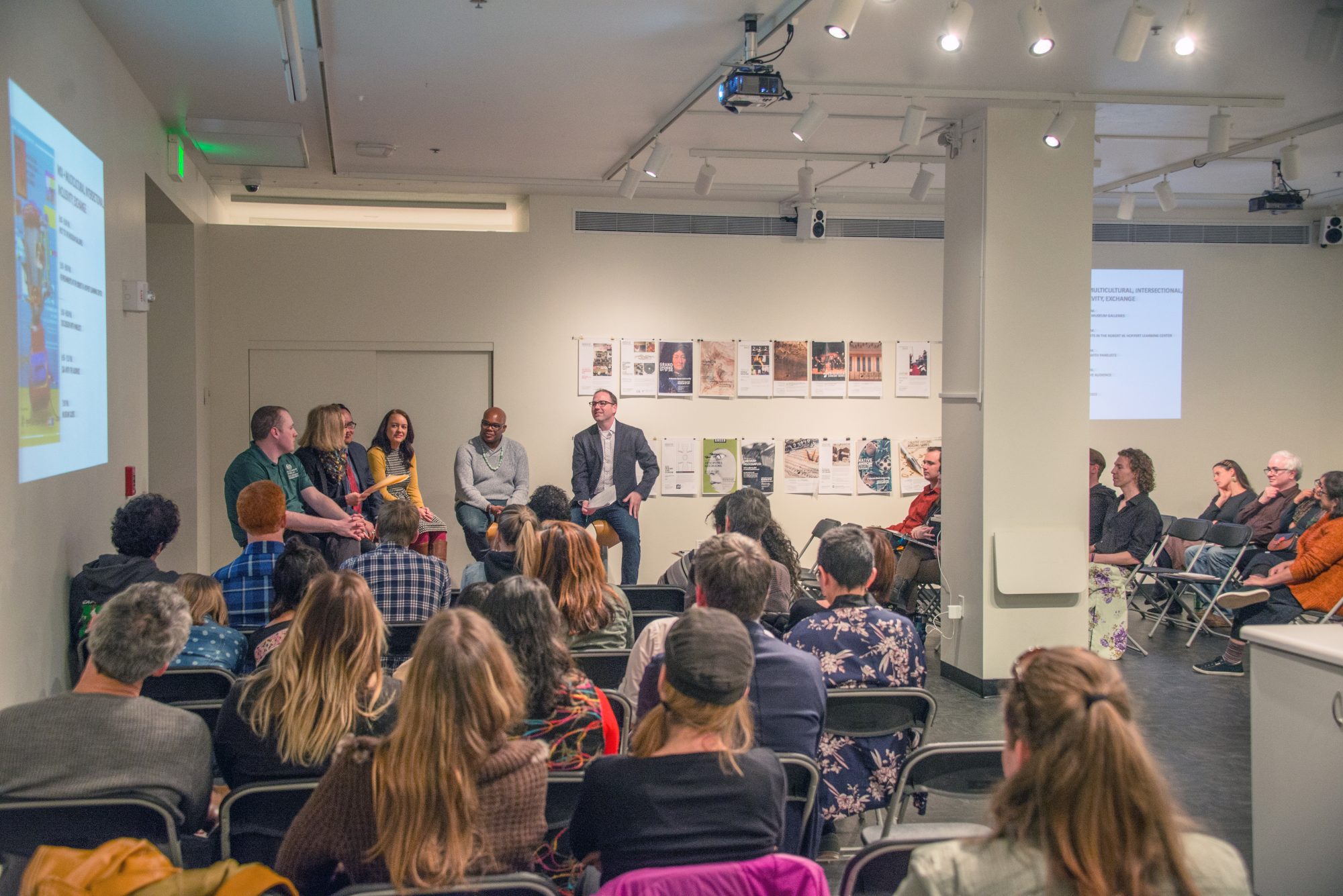
MIXing It Up
As the new director of the Gregory Allicar Museum of Art, Lynn Boland shared four feature areas of value, including a plan to build on the museum’s program of outreach and engagement. For Boland, the plurality of meanings embedded within any work of art provides limitless opportunities to make connections with people across society. “This isn’t something anyone can do alone, so we’re inviting CSU’s Student Diversity Programs and Services to help us explore new perspectives,” he said.
The museum foresees MIX becoming a regular offering within its programming, yet museum patrons shouldn’t anticipate exhibitions curated specifically with future MIX dates in mind. 1st MIX has a bigger purpose. “We want to jump past the idea that we need a special occasion to do something special for a diverse community or for intersectionality,” conveyed Boland. “MIX should expand the way we’re thinking about all of our programming going forward.”
Additionally, Boland expects MIX to directly inform how museum staff supervise the museum collection, including consideration for displaying and interpreting works of art. “We have a long to-do list of things we want to address to provide a broader, richer perspective for our collection and for our exhibitions,” he noted.
The thoughtful addition of artwork must be ongoing as the responsibility of cultural diversity and inclusion of identities is not the burden of one piece but must be spread across the entire permanent collection. Looking for patterns within a body of work (or a museum’s collection) that speaks to one audience and excludes another audience is an important method of checks and balances for Aoki. “It doesn’t have to be one work that does it, but over the course of 100 years what has material work done to speak to that question of inclusivity and who it hails out, who it calls to, who it engages or not?” he said. “It’s important for our sense of human cultural agency in the world through something as simple and as complex as art.”
What excites Boland is the possible exposure of elements the museum staff hasn’t yet considered. “It’s the surprises that are the most appealing to me – what haven’t we even thought about or realized, or what isn’t speaking to someone where it could – and that’s what MIX can do.”
“People will leave with maybe more questions than answers, but that’s part of these conversations. It’s hard to come up with absolute answers. What we’re trying to do is hopefully move things forward,” Mendonca says.
Panelists

Eric Aoki, Professor, Interpersonal, Co-Cultural, and Intercultural Communication, Department of Communication Studies; Artist
Rachael Johnson, former North Star mentor at the Native American Cultural Center; Student Coordinator at Women’s Studies & Gender Research, Ethnic Studies Department; Artist
Octavius Jones, Adjunct Professor- Ethnic Studies and Women's Studies Department, Storyteller
Joe Tiner, Graduate Assistant at Resources for Disabled Students, Photographer
Silvia Canetto, Professor, Department of Psychology; Affiliate Faculty in the Center for Women's Studies & Gender Research, Department of Ethnic Studies; Department of Human Development and Family Studies
Moderator: Tom Dunn, Assistant Professor of Communication Studies, Director of Basic Course
"What is art? What is social justice?
Does art have a role in social justice?
Does social justice matter in art? These are some of the questions discussed at the first MIX event. It will be great to see how future MIX events will carry forward the insights about art and social justice generated at the first MIX."
— Silvia Canetto,
Professor, Department of Psychology; Affiliate Faculty in the Center for Women's Studies & Gender Research, Department of Ethnic Studies; Department of Human Development and Family Studies
"The MIX event was a wonderful opportunity to come together and discuss the relationship between diverse identities and socio-cultural issues as they relate to defining social justice across a spectrum of everyday practice. The art and the museum space, itself, served as an inviting venue to visually engage and become reflective about difference and (re)presentation of diverse global identities through art. I look forward to the ways that MIX will grow and evolve in its ideas for participant-engagement and social justice information-sharing in the years to come."
— Eric Aoki, Professor—Interpersonal, Co-Cultural, and Intercultural Communication, Department of Communication Studies
"I wasn’t sure exactly what to expect from the first MIX—I’m not familiar with anything quite like it—but I had faith in the organizers and participants that proved well founded. The discussion was lively and challenging, yet respectful, and as large and complex as the topic was, it still addressed specific issues and suggested meaningful action. Having the program centered around the museum’s displays and interpretation not only offered a grounded discussion but served the museum in ways we couldn’t have achieved alone. One of the big ‘takeaways’ for me was that it’s not enough to be taking a nuanced and sensitive approach to the way we handle art, we need to be sure we’re communicating those approaches clearly and that we are being overt about the difficult issues with which we wrestle in the choices we make for the display and interpretation of the objects in our care."
— Lynn Boland, Director of the Gregory Allicar Museum of Art
"MIX was a great starting point for highlighting a lot of important conversations that are going on around campus, as well as some conversations that have been actively avoided for a long time. It was particular invigorating to hear from so many great scholars, artists, and activists from across the university talk about both the unique and shared ways in which they struggle with issues of representation, action, and agency. MIX served as a powerful call to action that I think inspired many people in the room to reflect on what they were doing to make change."
— Tom Dunn, Assistant Professor of Communication Studies, Director of Basic Course
"The first edition of MIX was truly elevating. Listening to the panelists talk about not only their ideas and their ways of fighting for social justice, but exchange different points of view, finding common ground and similarities in their fight, and having different identities was terrific. I think empathy was the starting point for the event, understanding was part of the experience, and I felt energized to do more by the end. I hope the audience felt that way, too. I’m very proud of what we created together and I’m sure the next edition will be even better."
— Krisagon Barz Mendonça, Designer and Illustrator, CSU Creative Services

